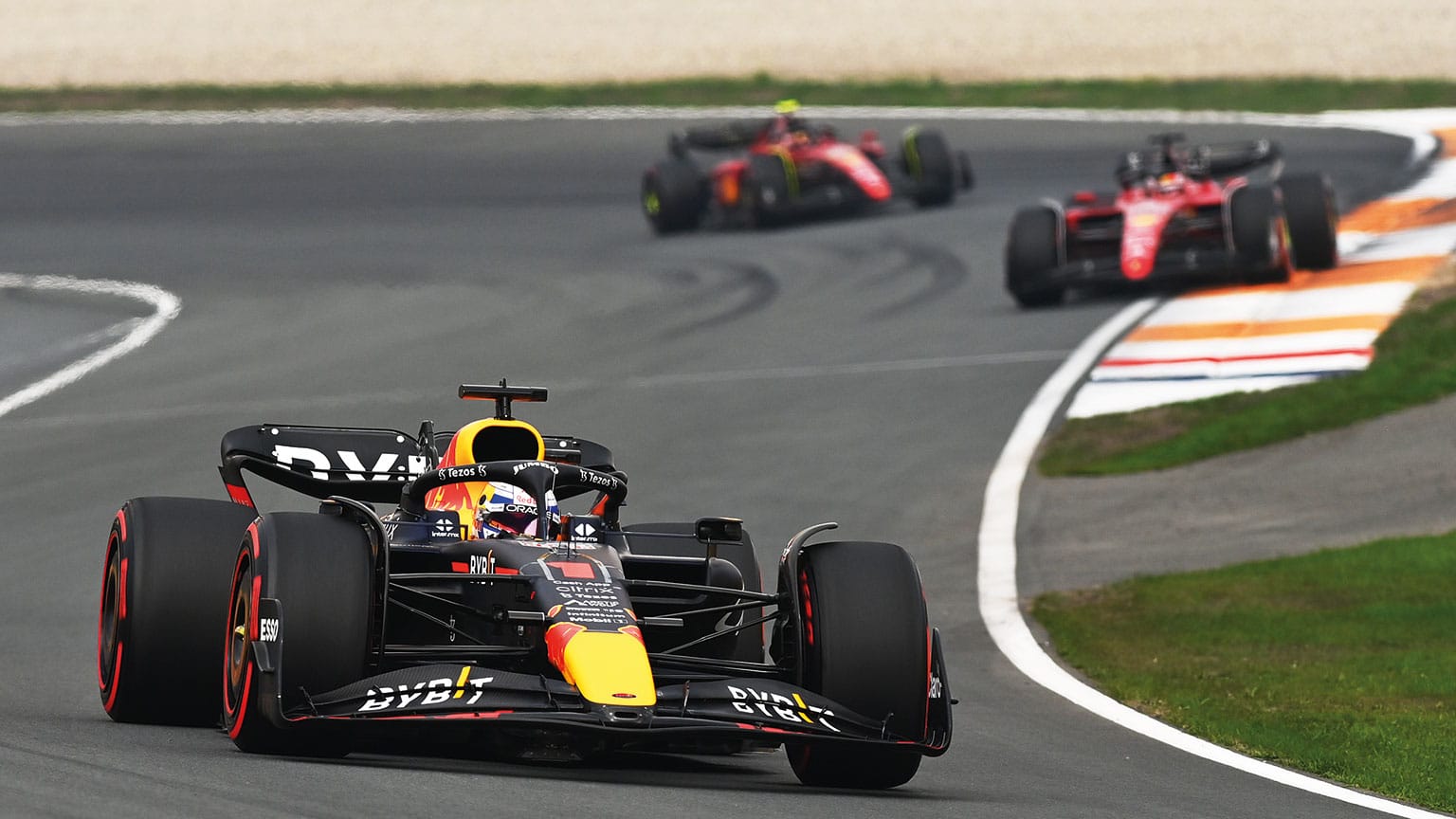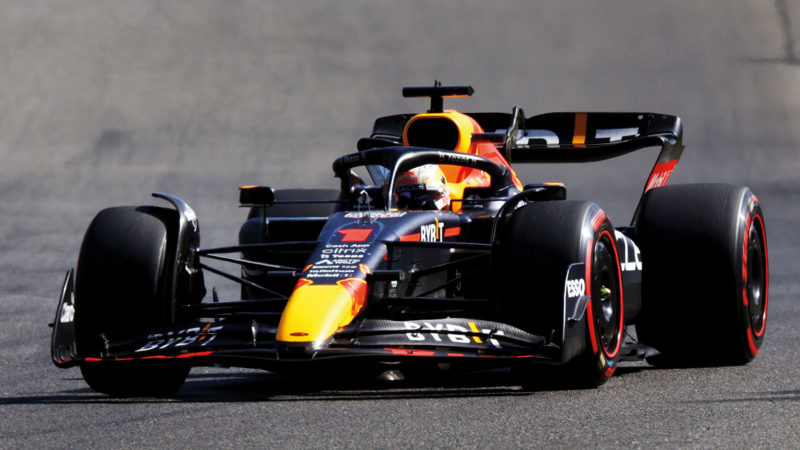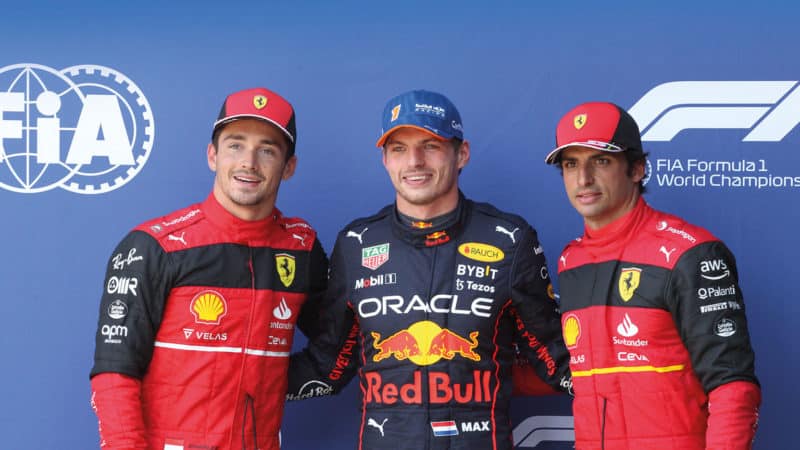Red Bull gives you wings: aero advantage of F1's fastest car
Big or small, the RB18 manages to blend high and low-downforce settings into dominant F1 performances. Mark Hughes explains

Spa proved ideal for Red Bull’s RB18, which could run at a higher height, but still retain the larger rear wing to boost its sector two performance
Getty Images
Looking just at this three-race sample, the Red Bull RB18’s pace advantage at Spa was far greater than at Zandvoort and significantly better even than Monza.
Verstappen had to fight harder to win the Dutch race from pole than he had to win at Spa from his penalised 14th on the grid, or at Monza from a penalised seventh. Spa and Monza are relative outliers on the calendar with their low-drag demands, though they have been joined recently by Baku and Jeddah. For such tracks aero efficiency becomes much more important than around conventional tracks where the relative importance of downforce to drag is much greater.
At Zandvoort, the cars run pretty much full downforce and so the track presents a completely different set of challenges to those outlying venues which bookended it. Downforce induces drag. But the point at which any lap time improvement from extra increments of downforce is cancelled out by the associated drag will vary between cars (and between track layouts). It is apparent that the Red Bull is a much more aero-efficient car than either the Ferrari or Mercedes. It retains more of its downforce as drag is reduced. Generically, upper body downforce from the bodywork and wings creates around three times as much drag as downforce derived from the underbody.

Spa proved ideal for Red Bull’s RB18, which could run at a higher height, but still retain the larger rear wing to boost its sector two performance
So if a car has a more effective underbody it will be more aero-efficient. If a greater proportion of its total downforce is generated from the underbody, it will be much more tolerant of greater wing area at low-drag tracks. That goes a long way to explaining why the Red Bull’s advantage was greater at Spa and Monza than at Zandvoort. As we have seen several times already this season, the Ferrari’s ultimate maximum of downforce is probably greater than the Red Bull’s but that only becomes the decisive advantage on very tight tracks. At Zandvoort, Leclerc was set to have taken pole until a slight over-commitment into Turn 10 ran him out wide on the exit and handed the position to Verstappen.
The conflicting demands of downforce and drag made the strengths of the Red Bull and Ferrari relatively close at the Dutch track – over one lap, at least. The Mercedes too was competitive at Zandvoort – because at the low ride heights the circuit’s topography encourages, the W13 generates very good downforce. It is when a circuit layout demands a greater ride height that the Mercedes – and to a lesser extent the Ferrari – run into trouble, and the Red Bull really comes into its own.
Spa, because of the compression of Eau Rouge, demands a higher ride height than average. Spa also has a whole sector 2 comprising mainly fast corners, where downforce is very valuable. Given that the Red Bull retains more of its downforce than its two rivals when the ride height has to be increased and it has more aero efficiency on a track where that’s more valuable than anywhere else, it was at its absolute best there. Although Verstappen’s fastest time in qualifying was ‘only’ 0.65sec clear of the rest, his fastest lap of the race when carrying 30kg of fuel (see report) was 0.6sec faster than a light-fuelled, soft-tyred Ferrari, which suggests his real advantage may well have been in excess of 1sec.
That is by far the biggest advantage the car has enjoyed all season and it enabled him to be in the lead and pulling away well before half-distance, despite having started 14th. Monza does not demand the higher ride height, nor does it have as many fast corners as Spa, hence the RB18’s pace advantage was not quite so devastating. But aero-efficiency is still very important and Verstappen was still comfortably the fastest in the race, even though Leclerc’s Ferrari wound up being 0.2sec faster in qualifying. Why the disparity between Saturday and Sunday?

The Ferrari drivers manage to crack a smile, despite being put in the shade
That’s to do with the wing level Red Bull chose, in the full knowledge that it would be taking a five-place grid penalty. Because of its aero-efficiency, Red Bull could use a significantly bigger wing than Ferrari, just as it had in Spa. This was less than the ultimate for single-lap pace (which wasn’t crucial anyway, given the penalty) but would pay back in the race. The extra downforce allowed the car to be balanced to better look after the tyres and the crucial difference on race day between the pace of Leclerc and Verstappen was that the tyre degradation of the Red Bull was considerably less.
